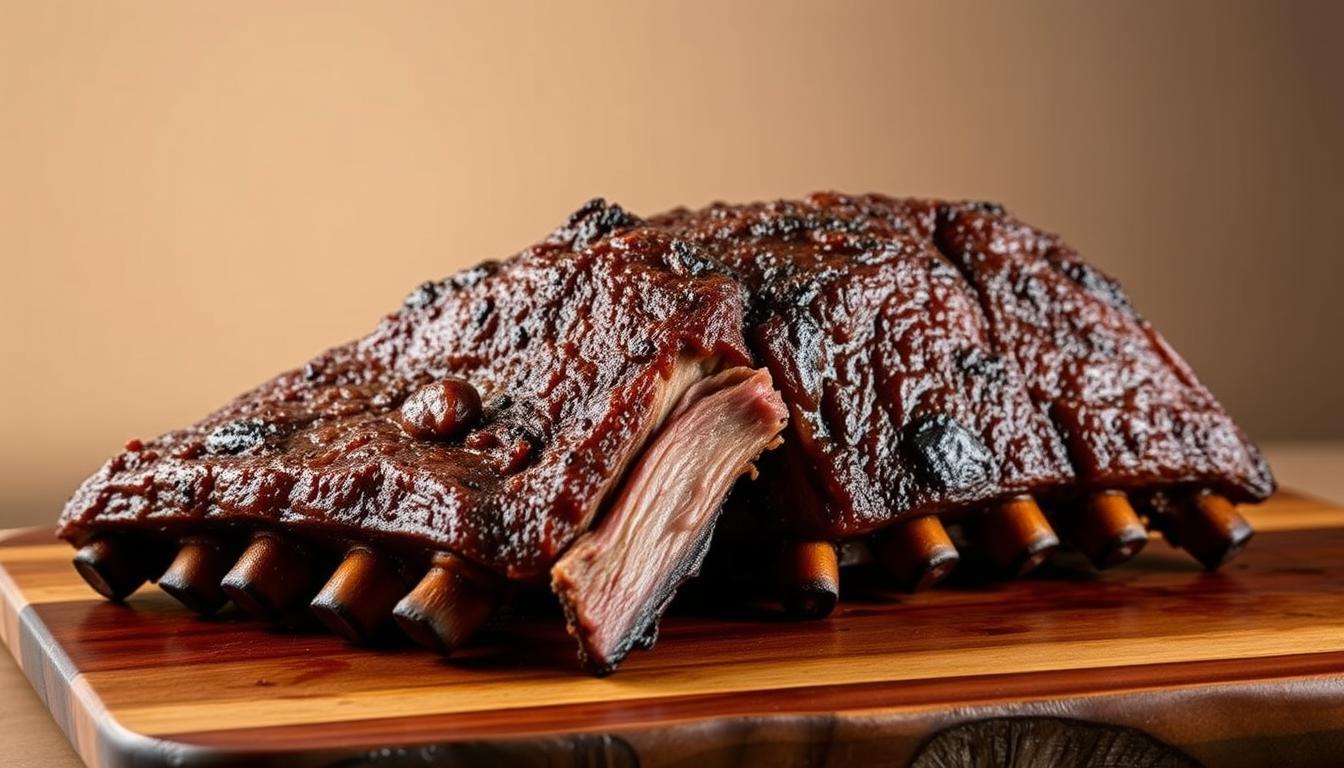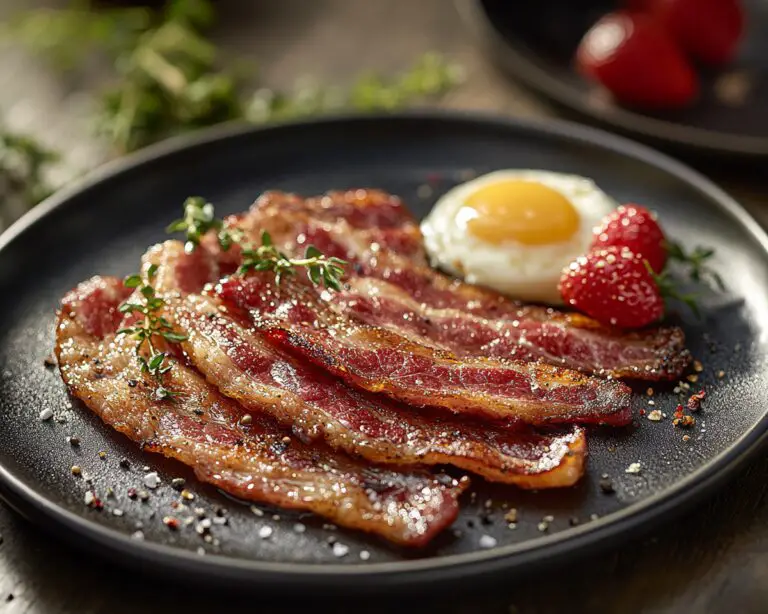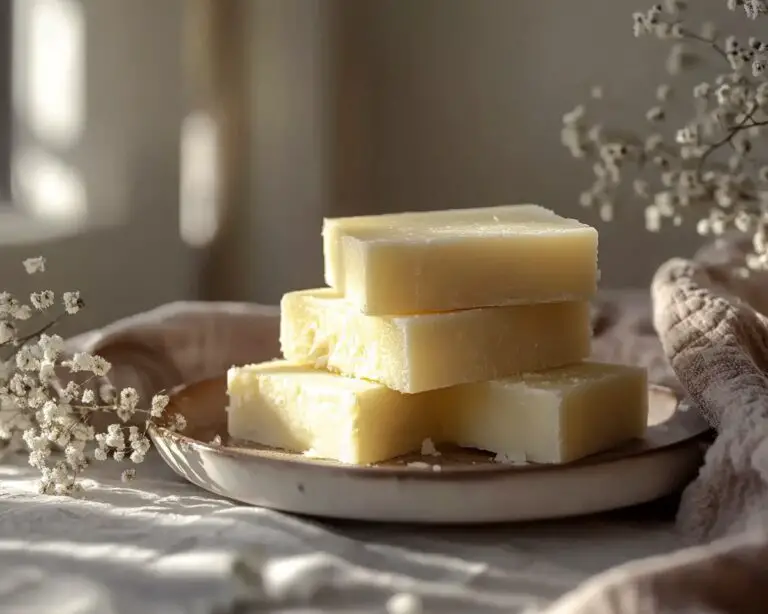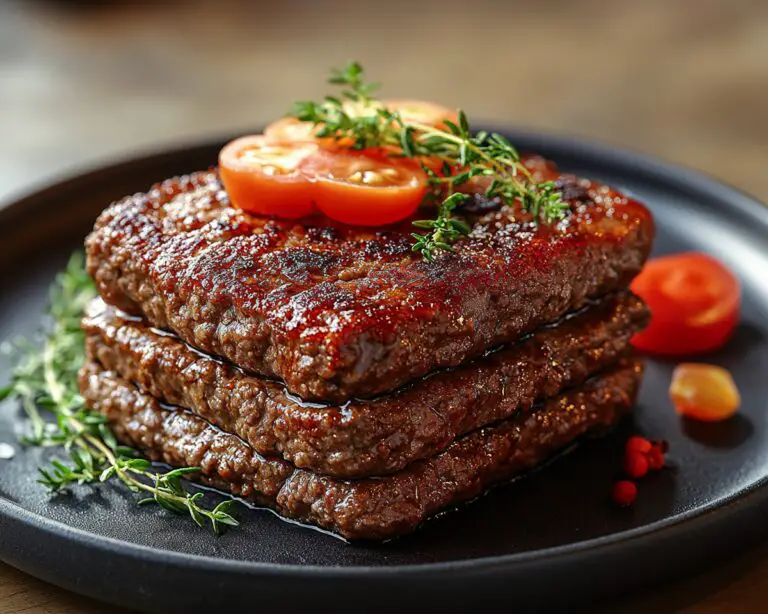Easy Beef Ribs Recipe: Tender, Juicy, and Delicious

Imagine sitting around the table with your loved ones. The smell of tender beef ribs fills the air. Good food has a way of bringing people together, creating memories that last.
This easy beef ribs recipe is more than just a meal. It’s an invitation to share joy, laughter, and connection. Whether you’re grilling for a BBQ or baking in the oven, these ribs are perfect for bonding over food.
In this guide, you’ll learn simple techniques and essential ingredients. These will turn 3 lbs of beef ribs into a dish everyone will love. You’ll find tips for smoking or oven-baking, making your next family meal unforgettable. So, get ready for a culinary adventure that’s all about enjoying delicious food and making memories.
Key Takeaways
- This easy beef ribs recipe highlights flavorful preparation for tender results.
- Cooking time for beef ribs varies from 3 ½ to 4 hours, stressing the importance of low and slow techniques.
- Using a variety of spices enhances the flavor of BBQ beef ribs.
- Optional grilling adds a smoky depth to oven-baked beef ribs.
- Serving your ribs with complementary sides creates a balanced and satisfying meal.
- With just 5 essential ingredients, this recipe simplifies achieving delicious results.
Introduction to Beef Ribs
Beef ribs are a true culinary delight. They offer a rich flavor and tender texture that makes any meal special. These ribs are great for barbecuing or slow-cooking. Choosing the right cut of beef ribs can make your meal even better, whether you’re after a juicy smoked beef ribs feast or want to impress your guests.
What Makes Beef Ribs Special?
Beef ribs are special because of their savory taste and satisfying texture. They are known for their deep beefy flavor. This flavor is enhanced by cooking them low and slow, making the meat tender. This method also brings out the natural flavors, making beef ribs a favorite among barbecue lovers. When looking for the best beef ribs recipe, think about how the cooking method, spices, and sauces can highlight the meat’s flavor.
The Different Cuts of Beef Ribs
Knowing the different cuts of beef ribs can help you pick the best one for your next meal. The main categories include:
- Short Ribs: Known for their strong flavor, short ribs come in different types like plate, chuck, English-cut, and flanken-cut. Each type offers a unique taste.
- Back Ribs: These ribs are less meaty but very tender and slightly sweet. They’re great with barbecue sauces.
- Boneless Beef Ribs: Rich and marbled, boneless cuts from the chuck or plate section are perfect for grilling.
Each cut has its own characteristics, making them suitable for various recipes. Properly cooked beef ribs can turn a simple dinner into a flavorful feast. Exploring different cooking techniques can help you get the best flavors out of your smoked beef ribs.
| Type of Beef Ribs | Characteristics | Popular Dishes |
|---|---|---|
| Plate Short Ribs | Massive, meaty, best for low-and-slow cooking | Smoked plate ribs, Korean galbi jjim |
| Chuck Short Ribs | Slightly smaller, rich marbling | Chuck rib stew, braised short ribs |
| Back Ribs | Tender, slightly sweet | Barbecued beef back ribs, oven-roasted ribs |
| Chuck or Plate Boneless Ribs | Rich, marbled, versatile | Grilled boneless ribs |
Ingredients for the Perfect Beef Ribs
Making delicious beef ribs starts with the right ingredients. Knowing what to use can make a big difference in taste and tenderness. You can choose from essential items and optional extras to please everyone.
Essential Ingredients
- Beef ribs (approximately 3-4 lbs)
- Olive oil (2-4 tablespoons)
- Garlic powder (1 tablespoon)
- Onion powder (1 tablespoon)
- Cajun seasoning (1 tablespoon)
- Dark brown sugar (2 tablespoons, packed)
- Chili powder (1 teaspoon)
- Salt (1 teaspoon, adjust as needed)
- Paprika (1 teaspoon)
- Oregano (2 teaspoons)
- BBQ sauce (to taste)
This mix of ingredients gives beef ribs a strong flavor. The dry rub brings out the meat’s taste, and olive oil keeps it moist. Don’t forget to add your favorite BBQ sauce for that classic taste.
Optional Add-ins and Variations
- Smoked salt for an extra layer of flavor
- Black pepper (to taste)
- Ground cumin (1 teaspoon for a unique twist)
- Dried thyme (1 teaspoon to elevate the herbs)
- Apple cider vinegar (½ cup for a tangy marinade)
- Hot pepper sauce (2 tablespoons for heat)
Trying different variations lets you make your beef ribs your own. Whether you like a sweeter rub or a tangy BBQ sauce, you can adjust these ingredients to your liking.
Preparing the Beef Ribs
Starting with quality meat is key when preparing beef ribs. The right cut greatly affects the dish’s taste and tenderness. Look for ribs with marbling for better moisture and flavor.
After picking the ribs, it’s important to trim them. This removes excess fat and improves taste without making the dish greasy.
Choosing the Right Ribs
There are different cuts of beef ribs, like back ribs, short ribs, and spare ribs. Each has its own texture and taste. Back ribs are leaner, while short ribs have more fat for richer flavor.
Choose the right cut based on your recipe and cooking method.
Trimming and Seasoning Techniques
Trimming the ribs is next. Remove the thick membrane on the bone side to avoid toughness. Use a sharp knife to peel away the membrane carefully.
Season the ribs well after trimming. A good spice blend enhances the meat’s natural flavors and creates a tasty crust.
Marinating Options
Marinating beef ribs can add flavor and tenderness. Use acidic ingredients like vinegar or citrus to break down connective tissues. Try different flavors with herbs, spices, or soy sauce.
Marinate the ribs for a few hours or overnight. This will give you a deeper flavor. With these steps, you’re ready for a delicious beef rib dish.
Cooking Methods for Beef Ribs
Exploring different ways to cook beef ribs can change your cooking game. Each method brings its own taste and tenderness. You can pick based on what you like best. We’ll look at grilling, smoking, braising, and oven cooking.
Grilling vs. Smoking
Grilling and smoking are top choices for beef ribs. Grilled ribs get a nice char and smoky taste from the grill’s heat. To grill them right, use indirect heat at 275°F. It takes about 2 hours, then 30 to 60 minutes more to get them tender.
For a final touch, sear them quickly on high heat. This adds flavor and looks great.
Smoked ribs, on the other hand, have a deep, smoky flavor. This method takes longer, but it’s worth it for the smoky taste. Your choice depends on your time and taste preferences.
Braising for Flavorful Tenderness
Braising is another great way to cook beef ribs. It uses both wet and dry heat for tender, flavorful ribs. Brown the ribs first, then cook them in a mix of wine, broth, and veggies. The liquid should cover the ribs for extra moisture.
Cook on low heat, stirring now and then. This way, the ribs become tender and delicious.
Using an Oven for Convenience
Oven cooking is easy and convenient for beef ribs. Preheat to 300°F. Cook them for 1 hour without foil, then 1.5 hours with foil. This takes about 2.5 hours, perfect for those who like to set it and forget it.
Let the ribs rest for 5 minutes before serving. This helps the flavors meld together.
Making the Perfect Dry Rub
Making the perfect dry rub for beef ribs is key to a flavorful crust. The right mix of spices can make your ribs taste amazing. This guide will help you blend spices for the best seasoning.
Balancing Spices for a Flavorful Crust
A good dry rub has different spices that match beef’s strong flavor. Start with:
- 1/4 cup brown sugar
- 1 tablespoon smoked paprika
- 1.5 teaspoons salt
- 1 teaspoon garlic powder
- 1 teaspoon mustard powder
- 0.5 teaspoon onion powder
- 0.5 teaspoon black pepper
This mix makes 1 cup of dry ingredients, great for 2 pounds of ribs. Use about 2 tablespoons on each side for a tasty coat.
Popular Dry Rub Recipes
Using BBQ dry rub recipes can change your cooking. Try this Kansas City-style rub:
- 1/2 cup brown sugar
- 1/4 cup paprika
- 1 tablespoon black pepper
- 1 tablespoon kosher salt
- 1 tablespoon chili powder
- 1 tablespoon garlic powder
- 1 tablespoon onion powder
- 1 teaspoon cayenne pepper
This rub works for up to six racks of ribs, great for big parties. Cook ribs low and slow to avoid burning the sugar. This keeps them tender and full of flavor.
Keep your dry rub in an airtight container for up to six months. This ensures you always have the right seasoning. Before cooking, let the rub sit on the meat for 10 to 30 minutes. This helps the meat soak up the flavors, making your ribs delicious.
BBQ Sauce Choices
Exploring different BBQ sauce options can really boost your beef ribs experience. You might choose between store-bought or homemade sauce based on what’s easier and tastes better to you. Each option has its own special qualities, so knowing the differences is key to picking the right one for your meal.
Store-bought vs. Homemade
Store-bought BBQ sauce is handy when you’re short on time. It comes in many flavors, like Kansas City’s thick tomato-based sauces or North Carolina’s tangy vinegar-based ones. But, these sauces might be too sweet for some, overpowering the beef ribs’ natural taste.
Homemade BBQ sauce lets you customize the flavors to your liking. A simple recipe uses just four ingredients, mainly vinegar, and needs at least four hours to infuse the best taste. Making your own sauce means you can pick the ingredients, ensuring a flavor that complements your meat perfectly.
How to Make Your Own BBQ Sauce
Creating your own BBQ sauce is a fun process. Here’s a basic guide to making tasty sauces:
- Classic BBQ Sauce: Start with ketchup, add Worcestershire sauce and cumin for depth. This Texas-style sauce is great with beef ribs because of its ketchup-forward taste.
- Sweet and Spicy Option: Mix brown sugar and honey for sweetness, then add cayenne and black pepper for a spicy kick. This sauce is perfect for slow-cooked beef ribs.
- Vinegar-based Sauce: Try the North Carolina style with apple cider vinegar for a tangy flavor. Start with 1 cup of store-bought sauce and add 1 tablespoon of vinegar, adjusting to taste.
- Creative Variations: For something new, add your favorite soft drink or molasses to make a sweet and tangy sauce. These unique sauces can impress your guests and add to the meal’s flavor.

Whether you prefer homemade BBQ sauce or the ease of store-bought, the right sauce can make your ribs taste amazing. Don’t be afraid to try different ingredients and methods to find your go-to sauce.
Cooking Time and Temperature
Knowing the right cooking time and temperature for beef ribs can make a big difference. Cooking them low and slow is key to tender and tasty meat. This method breaks down the connective tissues, making the ribs fall off the bone.
Importance of Low and Slow Cooking
Low and slow cooking is more than a technique; it’s a way of life in barbecue. It teaches patience and the right heat, making the ribs tender and flavorful. You’ll get meat that’s so tender, it melts in your mouth.
Recommended Cooking Temperatures
The perfect temperature for beef ribs is essential for great results. Here are some temperature ranges for different cooking methods:
| Method | Temperature | Cooking Time |
|---|---|---|
| Oven | 225°F | 3 hours covered with foil |
| Crockpot | Low setting | 6-8 hours |
| Instant Pot | N/A | 45 minutes |
| Uncovered Broiling | Broiler setting | 2-4 minutes after baking |
For beef short ribs, cook them at 275°F for 3 ½ to 4 hours. Following these temperatures ensures your ribs are always perfectly cooked. They’ll be full of flavor and tender in every bite.
How to Check for Doneness
To get perfect beef ribs, you need to watch them closely while they cook. It’s important to check the ribs’ temperature to make sure they’re just right. This way, your ribs will be tender and delicious. Here are two ways to check if your ribs are done.
Using a Meat Thermometer
A meat thermometer is key for knowing when your ribs are cooked. The USDA says ribs are safe at 145°F. But, for the best taste and tenderness, you might want to cook them a bit longer.
Experts suggest cooking ribs between 180°F and 200°F. For example, beef short ribs need 205°F to 208°F for the perfect tenderness. Use a leave-in thermometer to keep an eye on the temperature without constantly checking.
Visual Cues for Tender Ribs
Visual signs can also tell you when your ribs are done. Look for a deep color and a caramelized crust from the dry rub. The meat should pull back a bit from the bones.
When you insert a thermometer, the ribs should feel like room temperature butter. If they’re easy to insert, they’re likely perfectly cooked. Remember to let the ribs rest for at least an hour after cooking. This helps the juices spread, making the ribs even more tender and flavorful.
Serving Suggestions
Discovering the best ways to serve beef ribs can make your meal better. Choosing the right sides for beef ribs adds flavor and impresses your guests. Think about flavor, texture, and color to make your beef ribs look great.
Best Sides to Pair with Beef Ribs
Pairing your beef ribs with the right sides can make your meal better. Adding vegetable side dishes makes the meal healthier. Here are some popular sides for beef ribs:
- Coleslaw – Asian-inspired variants bring a fresh twist.
- Vegetable salads – Include summer tomatoes and seasonal vegetables.
- Mashed potatoes – Comfort food that can be prepared in about 20 minutes for eight servings.
- Vinegar-based potato salad – A great non-mayonnaise option.
- Texas-style baked beans – Takes about 35 to 40 minutes to bake.
- Deviled eggs – A quick appetizer that delights guests.
- Cheesy grits – A Southern classic that pairs well with ribs.
- Grilled potatoes – A flavorful side needing just 20 minutes to prepare.
- Air-fried green tomatoes – A crispy accompaniment in only 10 minutes.
- Corn salad – Allow for 2 hours minimum marination for best results.
Plating Tips for a Great Presentation
Good beef ribs presentation leaves a lasting impression. Here are some key plating tips:
- Use vibrant colors – Create contrast with fresh greens and bright ingredients.
- Arrange thoughtfully – Place ribs in a staggered manner for visual appeal.
- Garnish elegantly – A sprinkle of fresh herbs adds freshness and color.
- Serve in stylish dishes – Consider rustic platters or elegant bowls to elevate the meal’s appearance.
- Balance portions – Ensure sides for beef ribs and the main dish share space effectively, maintaining proportion.

Leftover Ideas for Beef Ribs
Turn your leftover beef ribs into new, exciting dishes. You don’t have to stick to boring reheats. There are many ways to enjoy beef ribs leftovers, from tasty sandwiches to warm soups. Here are some ideas to use up your leftover beef ribs.
Creative ways to use leftovers
Repurpose leftover beef ribs for fun meals. Here are some ideas:
- Beef Ribs Quesadillas: Mix shredded beef ribs with cheese and veggies for a tasty treat.
- Beef Ribs Tacos: Top shredded ribs with your favorite taco toppings for a quick dinner.
- Beef Ribs Sandwiches: Place meat on hoagie rolls with BBQ sauce or coleslaw for a satisfying sandwich.
- Beef Ribs Breakfast Hash: Add ribs to a breakfast hash with potatoes and eggs for a filling meal.
- Soups and Stews: Simmer chopped ribs in broth for a rich, flavorful soup.
- Cheesy Beef Ribs Casserole: Bake ribs with pasta and cheese for a comforting dish.
- Ribs Fried Rice: Stir-fry rice with chopped beef ribs and veggies for an easy meal.
- Stuffed Peppers: Fill bell peppers with a mix of ribs and rice for a healthy option.
Storage Tips for Beef Ribs
To keep your beef ribs fresh, follow these storage tips:
- Refrigerate: Store leftover beef ribs in an airtight container in the fridge within two hours to stop bacterial growth.
- Freeze: Wrap ribs tightly in foil or freezer-safe bags for long-term storage. They can last up to three months in the freezer.
- Thawing: Thaw frozen ribs in the fridge overnight before using them in new recipes for the best taste.
FAQs about Cooking Beef Ribs
Many home cooks look for help when cooking beef ribs. This section answers common questions about techniques, preparation, and serving. Knowing these beef ribs cooking tips will help you make delicious ribs every time.
Common Questions Answered
- What is the typical cooking time for beef ribs? Beef ribs take 6 to 8 hours to cook, much longer than pork ribs’ 4 hours.
- How should I brine beef ribs? Use 1 tablespoon of salt per quart of water for effective brining.
- Why is resting time important? Let your beef ribs rest for 10 to 15 minutes after cooking for the best tenderness.
- What internal temperature should I aim for? Beef ribs should reach 200 to 208°F. But tenderness is more important.
- How does the fat content affect flavor? Beef ribs’ higher fat content gives them a richer flavor than pork ribs.
Tips from the Experts
- Experts say to apply dry rubs and let them sit on the meat for 24 hours to improve flavor.
- Cooking beef ribs at medium heat (around 350°F) for a few hours works well.
- The Texas crutch technique involves wrapping ribs in aluminum or butcher paper for 1.5 to 2.5 hours. It keeps moisture in.
- Be careful not to over-smoke, as it can make the ribs taste bitter. Balance is key.
- Make sure to use enough liquid when braising to avoid burning.
Conclusion: Enjoying Your Beef Ribs
Cooking beef ribs is more than just a technique. It’s about making your dining experience better. When you enjoy the tender, juicy ribs, you’ll see the love and creativity you put in. Share this special meal with friends and family to celebrate the unique flavors and textures.
Final Thoughts on Cooking and Enjoyment
Beef ribs are versatile, allowing you to try different cuts and cooking methods. This means you can find a recipe that fits everyone’s taste. Whether grilling, smoking, or braising, the fun is in the making, not just the eating.
Encouragement to Try Different Recipes
Don’t be afraid to try new things! Add different marinades, rubs, or sides to your beef ribs. Every meal is a chance to explore, so let your creativity shine. The only limit is your imagination, leading to amazing dishes.
FAQ
What type of beef ribs should I choose for the best flavor?
For the best flavor, choose either short ribs or back ribs. Short ribs are tender and rich in flavor. Back ribs have a milder taste. Both can be juicy if cooked right.
How long should I cook beef ribs to ensure they are tender?
Cook beef ribs low and slow for tenderness. Aim for 225°F to 250°F. It takes 4 to 6 hours, depending on the method.
Can I use a slow cooker for my beef ribs recipe?
Yes! Slow cookers make beef ribs tender and juicy. Season the ribs, add BBQ sauce or marinade, and cook on low for 6 to 8 hours.
What are some easy beef ribs recipe variations I can try?
Try different marinades, dry rubs, or BBQ sauces. For example, use a coffee rub or spicy Asian marinade. You can also make your own BBQ sauce.
How do I know when my beef ribs are perfectly cooked?
Use a meat thermometer for doneness. Aim for 195°F to 205°F. Also, look for meat pulling away from bones and a caramelized crust.
What side dishes pair well with beef ribs?
Pair beef ribs with coleslaw, cornbread, or baked beans. Grilled veggies and creamy potato salad also enhance the BBQ experience.
How can I store leftover beef ribs for later use?
Cool ribs to room temperature, then wrap them tightly. Store in an airtight container in the fridge. Enjoy within 3 to 4 days or freeze for up to three months.
What are the benefits of making my own BBQ rub and sauce?
Homemade BBQ rub and sauce are healthier and customizable. You can avoid preservatives and match flavors to your taste, making your ribs unique.
Source Links
- https://www.food.com/recipe/3-step-fall-off-the-bone-ribs-easy-283936
- https://divascancook.com/easy-oven-baked-beef-ribs-recipe-bbq/
- https://healthyrecipesblogs.com/beef-ribs/
- https://onestophalal.com/blogs/info/types-of-beef-ribs-a-meat-lovers-guide-to-cuts-and-flavors
- https://gfreefoodie.com/smoked-beef-ribs/
- https://www.everettbeef.com/blog/best-easy-oven-baked-bbq-beef-ribs
- https://healthyrecipesblogs.com/oven-beef-back-ribs/
- https://40aprons.com/beef-back-ribs-oven/
- https://www.myforkinglife.com/oven-baked-beef-ribs/
- https://cookthestory.com/grilled-beef-ribs/
- https://www.thepioneerwoman.com/food-cooking/recipes/a9435/braised-short-ribs-heaven-on-a-plate/
- https://www.thespruceeats.com/sweet-and-spicy-beef-rib-rub-recipe-335891
- https://cookthestory.com/dry-rub-for-ribs/
- https://www.thespruceeats.com/kansas-city-rib-rub-recipe-335915
- https://www.southernliving.com/food/entertaining/bbq-sauce-recipes?srsltid=AfmBOooIK33DnOlSRzcjsEuSyqVagfetE67XmQxBobT-dJclu2FvlEgo
- https://www.simplyrecipes.com/one-ingredient-upgrade-for-better-bbq-sauce-8651508
- https://eatsimplefood.com/easy-beef-short-ribs/
- https://bakedbree.com/oven-baked-beef-ribs-recipe
- https://www.marthastewart.com/8300438/how-long-to-bake-ribs
- https://cusocuts.com/blogs/news/at-what-temperature-are-ribs-done?srsltid=AfmBOoog4w-G5TxerK_0IKuB9pbJIaknd-9EKdw2UCD6S7Omi4azUGrf
- https://www.kamadojoe.com/blogs/recipes/smoked-beef-short-ribs-1?srsltid=AfmBOoo4GW68oATL7W5x02M5AFgXVGbMC1sm9F5Q-dG7vujoEC91v9yf
- https://www.onceuponachef.com/recipes/slow-baked-bbq-short-ribs.html
- https://www.realsimple.com/food-recipes/recipe-collections-favorites/ribs-side-dish-recipes
- https://www.southernliving.com/what-to-serve-with-ribs-6531749?srsltid=AfmBOorFkfCHOnLtHCVxsrJjdxDF4m3GqdcpcyioU1hjpK_qjHi0E8Xy
- https://insanelygoodrecipes.com/leftover-ribs-recipes/
- https://www.tasteofhome.com/collection/beef-short-ribs-recipes/?srsltid=AfmBOoq6i2uuC_qwj0Ev_49__zHZjkioiEue7VCUsmHqysee31LXFXXi
- https://bakeitwithlove.com/leftover-prime-rib-beef-stroganoff/
- https://www.tastingtable.com/1565917/tips-cooking-beef-ribs/
- https://www.castironskilletcooking.com/beef-ribs/
- https://3lakesranch.net/blogs/recipes/beef-ribs-recipe-in-oven-easy-and-quick?srsltid=AfmBOorJR8Cpkoiz1ONaAT5mmQvW8gbioDVRYdhzVMaaY-62MYgwf4T_
- https://centralcitybbq.com/perfect-beef-ribs-for-wood-smoked-bbq-top-tips/
- https://meatking.hk/blogs/recipes/delicious-beef-finger-ribs-recipe?srsltid=AfmBOop6Hp0STo3ticX-xEge8Nf4MiHK6HR5R1E1iRkDiN1fYXTaoyXm






